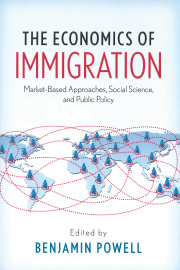As college graduation season begins, you can anticipate seeing news stories about the terrible plight facing today’s graduates. Many of these stories will focus on students’ heavy debt burdens and poor job prospects, and call the investment in higher education a failure. Young grads do face difficult challenges, but the problem is not that their “investment” doesn’t pay off.
To be sure, the rising cost of higher education is a serious problem. The average annual tuition and fees at private colleges and universities has risen to $31,000, roughly 76 percent in inflation-adjusted dollars since the year that most of graduates from the Class of 2015 were born. At public colleges and universities, the average cost of $9,100 represents a 141 percent increase.
Seventy percent of this year’s 3.5 million graduates have amassed student-loan debt in order to meet the high cost of higher education. The average student loan debt is a whopping $27,000. This reality will undoubtedly lead some pundits to ask: “Is college worth the investment?”
But the question is based on a false premise. College is not just an investment in human capital to improve future earnings. Often, it provides consumption goods, too.
These goods might take the form of recreational amenities, such as climbing walls and lazy rivers. But they can also include courses, or even majors, focused on topics like art appreciation—and a variety of other subjects—that are pleasurable and foster long-term cultural enrichment, but which do little to increase earnings.
Unfortunately, massive government subsidies to higher education make the bundling of human capital investment and consumption for young adults a bad deal for society. For students and parents who understand the difference between the two, it can be a great deal. But taxpayers pick up a portion of students’ education and consumption expenses, too.
The high cost of tuition and all-too-common low return on higher education spending is both an outcome driven by market forces and a consequence of government interventions.
As families become wealthier, they tend to demand more leisure and consumption for their children. Colleges and universities are happy to supply it. Government subsidies, however, distort this tradeoff, and neither the families nor the institutions face market prices. The subsidies also increase the demand for higher education, which drives up tuition, and the schools become incentivized to oversupply consumption goods.
Once we recognize that much educational spending and student debt are for financing consumption rather than investment, we can gain a clearer perspective on the problems facing recent college grads.
My point isn’t meant to downplay the problems that college graduates face. The unemployment rate for young adults between the ages of 20 and 24 is 9.5 percent, more than twice the rate for adults aged 25 years and older. Student loan debt, much like credit card debt from Vegas vacations and other consumption, is difficult to manage if you can’t find gainful employment.
Also, the government has made it harder for recent graduates who are employed to meet their financial needs. Obamacare, for example, forces young healthy people to buy higher priced insurance that subsidizes the premiums of the old and sick. Young adults are also forced to pay into Social Security and Medicare, programs that will likely go bankrupt before they can collect benefits.
So to the Class of 2015, I feel bad for you that government has helped to inflate the cost of your degrees and taxes you in ways that make it harder to meet your student loan payments and other financial obligations. But it’s been a fun four (or more) years for you. Now it’s time to get to work and pay up.











